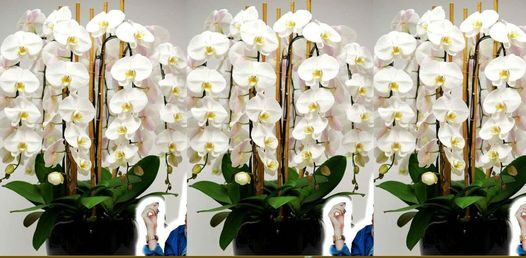
Orchids are, for the most part, plants that do not grow in the ground. Thus, the question arises of the effectiveness of fertilization with all types of household products, such as coffee, milk or cut bananas. Experts say that a good natural fertilizer should be water-based, without solids and well fermented for immediate absorption of nutrients. Know that it is a myth to put coffee or eggshells in your orchid’s vase. It will not be able to absorb these nutrients as it is a very special flower. The natural and much more effective version is yeast fertilizer for orchids. Yeast is the most effective natural fertilizer that contains many B vitamins. The perfect balance of these substances promotes the growth of plant roots, making them stronger and easier to transplant.
What is a good natural fertilizer for orchids?
Natural fertilization is a little more complicated than simply pouring organic matter into the plants’ soil. It takes a holistic ecosystem with healthy communities of microorganisms and the right temperature, humidity and time to break down the large nutrient molecules in organic matter into smaller chemical molecules before they can be absorbed by plant roots. The principle of organic fertilization is to feed the soil and not the plants. Soil microbes can take three weeks to a few months to metabolize large molecules of organic matter, such as proteins, into smaller molecules. But since orchids do not grow in soil, the way to naturally fertilize epiphytic orchids should not be aimed at feeding the soil for their release. On the contrary, an immediate release of nutrients is required. Furthermore, what makes natural fertilization more difficult for orchid growers is the approach that most orchids are grown indoors and are not natural to their original habitat. This includes:
Growing orchids in pots
Growing orchids indoors
Growing orchids in a medium of moss and tree bark
wash or wet the orchids periodically to prevent salt build-up in the roots
change the environment every 2 years to prevent decomposition and rot from the roots
Yeast fertilizer for orchids: the recipe
A good natural fertilizer suitable for growing orchids indoors should be water-based to facilitate rapid release of nutrients. Follow these notes to prepare the yeast sauce recipe:
1 kg of yeast diluted in 5 liters of water
Dilute the solution with water in a ratio of 1:10 before use.
If you have dry yeast instead of regular yeast:
Count 10 grams per 10 liters of warm water
Add two tablespoons of sugar
Let the mixture rest for a few hours.
As a rule, this solution is used for watering flower beds, vegetables, fruit trees and berry bushes and orchids.
Myths about natural fertilizers for orchids
There is nothing wrong with fertilizing plants naturally as natural fertilizers work well for plants. But many people make it sound too simplistic. Next, I’m going to tell you about the problems with some of the myths about these natural fertilizers generally recommended to avoid mistakes when maintaining orchids.
Coffee: The use of coffee to fertilize orchids is one of the main myths. Coffee works well as a fertilizer for soil-filled garden plants. But not for indoor orchids. Are coffee grounds good for indoor plants? Especially for fertilizing orchids, this poses several problems. It can clog the foam medium, reducing air flow to the roots and thus increasing the risk of root rot. Furthermore, coffee grounds take a long time for the proteins to be broken down by microbes and release their nitrogen for absorption by the roots. Again, epiphytic orchids do not grow in soil, so it is questionable whether there are enough microbes, if any, around the roots to break down the nitrogen. Coffee grounds can also attract mosquitoes and decaying pests.
Eggshells: There are recommendations to cook eggshells, grind them into powder and then spray them on orchid leaves or apply them directly to the substrate. The claim is that burnt eggshells provide calcium phosphate to orchids. The problem is very similar to that of coffee grounds. Eggshell powder can clog the orchid’s midsection, reducing airflow to the roots. And applying eggshell powder to the leaves doesn’t work, because the protein molecule is too big to pass through the leaves’ tiny pores. So beware of myths.
